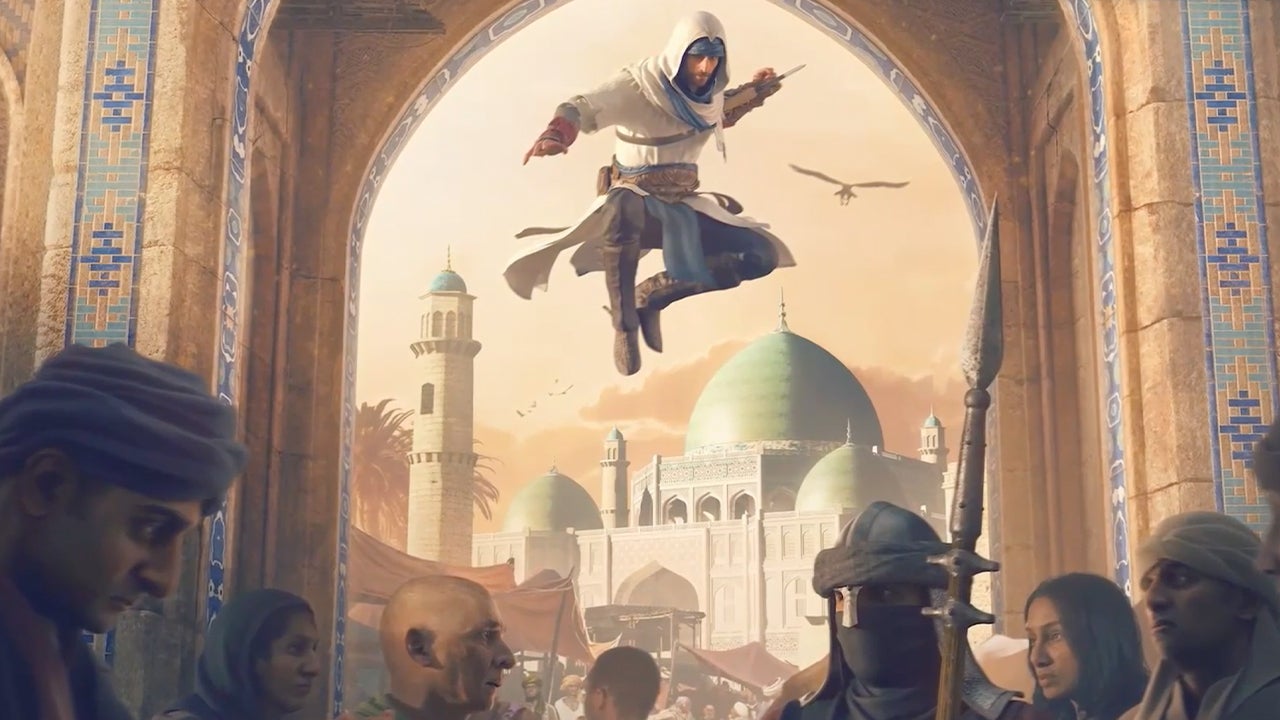
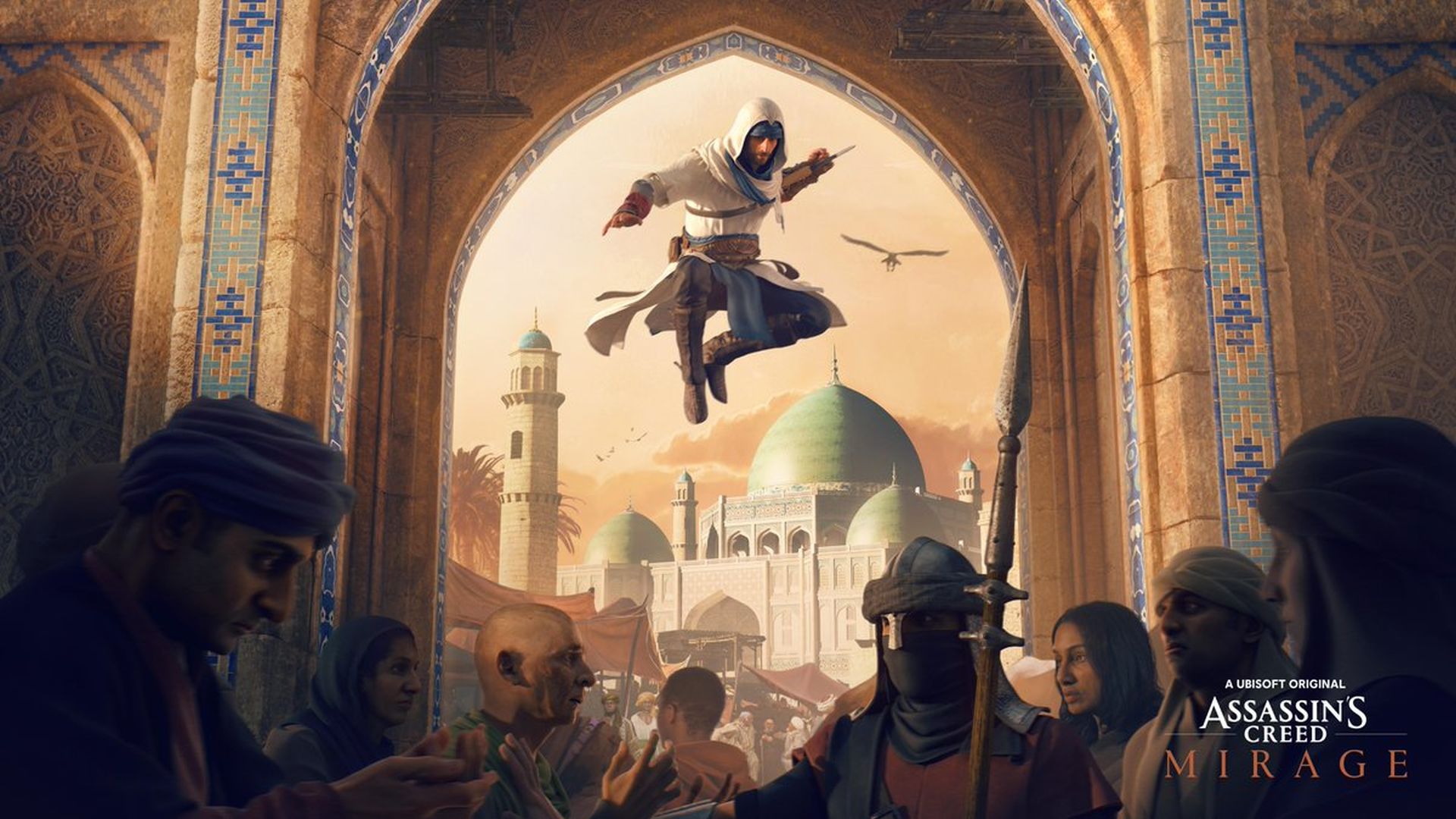
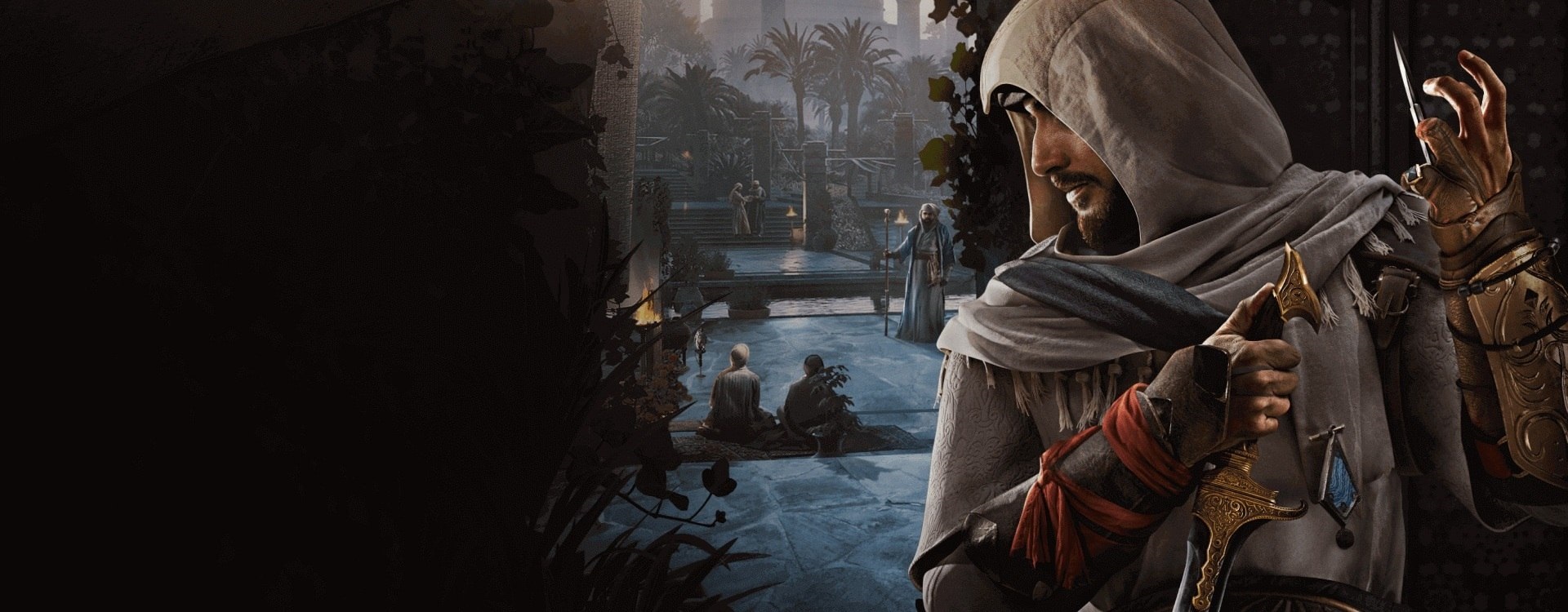
Action adventure - Infiltration
Level Designer at Ubisoft Bordeaux
PC - Consoles
Anvil
The Challenges
How to bring back the nostalgia with a modern treatment
The main objective of the project was to bring back the nostalgia from the first Asssassin’s creed with elements of design from the modern ones. Our work in level design was to work with these elements that were not designed to be mixed in the first place
As the game focuses on stealth and parkour, I worked on different types of content: locations and districts. I had the ownership on a military location and other locations to explore . I also worked on 3 different districts.
For the locations, at Ubisoft we worked with their rational level design method, that brings different guidelines. Military locations have a different treatment than the exploration ones. Military ones must fit with a specific playstyle that support stealth. Exploration ones focus on puzzle, elements that details the lore or unique rewards.
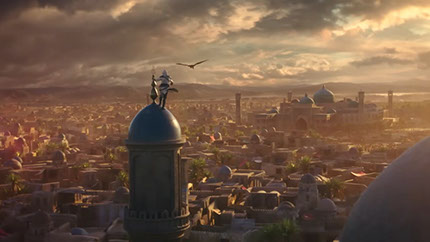
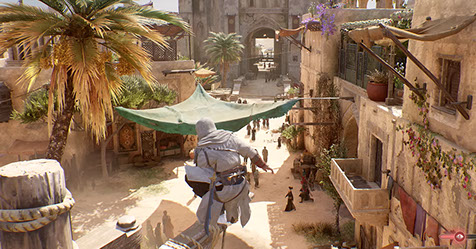
My main work was on a Military location. I inherited it from another Level Designer, where only the intention was set. I reworked the level to avoid world logic issues, included enemies (and their patrols) and ingredients. Every location has their micro design treatment that I will detail more when the game will be released.
For the districts, the focus was on 3 parts, the parkour, the crowdlife and the urbanism. It’s all about building placement to create a coherent district for the city with its own buildings, culture, people, etc… The crowdlife brings movement to the city. Lastly, parkour was set according to the urbanism. It was designed to be a network and to create a link between different points of interest or more and serving mostly the main quests as it was in the first Assassin's Creed's.
Don't hesitate to ask for more information in a interview with signed non disclosure agreement. It would be my pleasure to explain in details the design choices that I made.
Dyeing Factory
I also oversaw the Dyeing Factory. It is primarily the location where players meet Dervis for the first time in Baghdad. Players will have the opportunity to come back several times to this location to grab some contracts from Dervis. It's also a location that includes a puzzle designed by me and a military setup created by Ubisoft Sofia.
I focused on building the location with dyeing pots, parkour, and a puzzle. Dyeing pots presented a lot of technical issues and constraints, especially with the
navmesh and crowdlife. I had to create the space for combat, allowing players to fight enemies without any weird behavior. This meant that all the pots had to be at a perfect height to avoid animation issues. We couldn't let enemies walk on open pots due to navigation issues. So, some pots are closed, and all the spaces should link to one another to prevent guards from taking long detours. I worked with Jérôme Rajcek on this location.
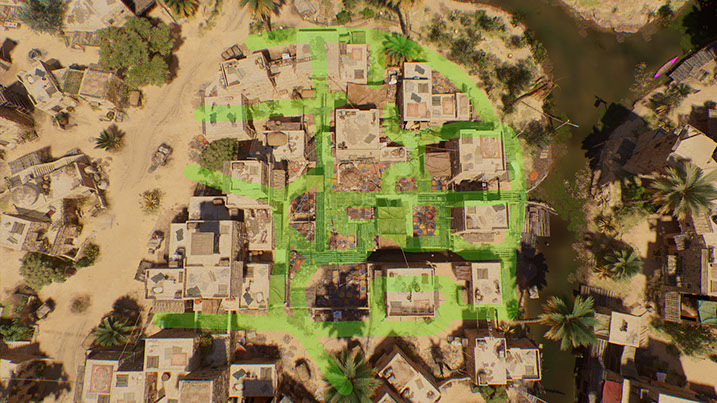
The second challenge was to design parkour lines leading to Dervis at every entry point of the location. These lines also needed to pass through the center of the location, requiring the creation of paths that adhered to parkour guidelines. One of these guidelines involved incorporating variations of ingredients within the parkour lines, adding complexity and diversity to the player's movement experience.

Finally, the level contains a small puzzle that I created. It revolves around explosive jars and finding the right line of sight to create an entry point.

Upper Harbour
I oversaw the level design of Upper Harbour. In the story, Basim needs to help Beshi save rebels who could assist him in freeing Ali. Ali was investigating slave trafficking, which was his next target for his revolt, but he got apprehended.
Basim must release three rebels from the Turkish army. The Turks hijacked the harbor, took control of it, and managed the merchandise.
Location : A harbour in the north of Baghdad used to manage raw materials and fish.
Time of the day : The level can be played at any time including during night time.
From : The arrival at Baghdad
To : The prison
Difficulty : The level is designed to be both easy and challenging, serving as a tutorial for the trickster playstyle.
Characters : Beshi and his men, along withTurkish army guards.
Player capabilities : The player only has throwing knifes and their torch.
Ambiance / Flavor : It is gungy and dirty yet sandy at the same time.
Time to finish : 15 minutes
My intentions were as follows :
- Create an environment where players can utilize level elements to eliminate enemies discreetly, making it appear as an accident.
- Navigate into different layers of verticality and natural areas (like water)
- Allow multiple approaches to the level's challenges, providing players with strategic choices.
- Make it feels like the first true location.


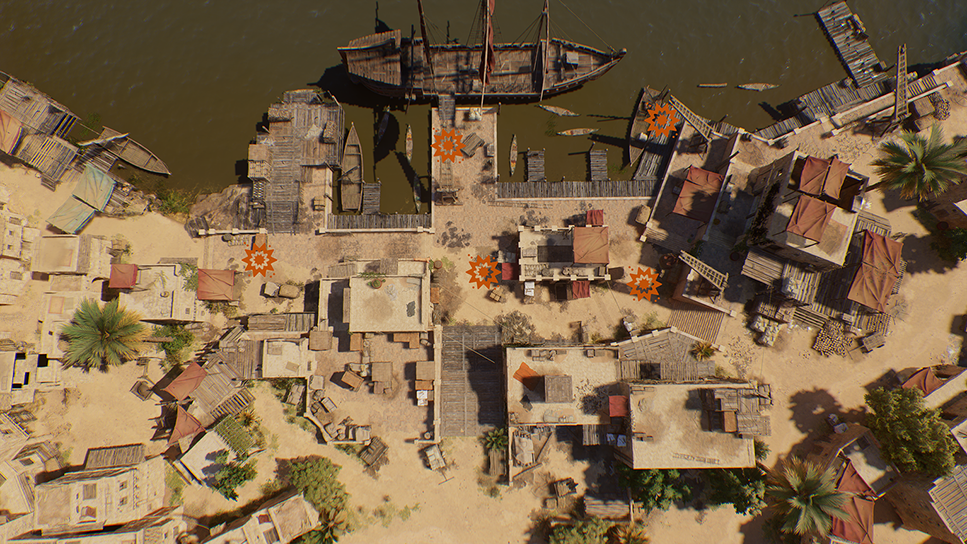
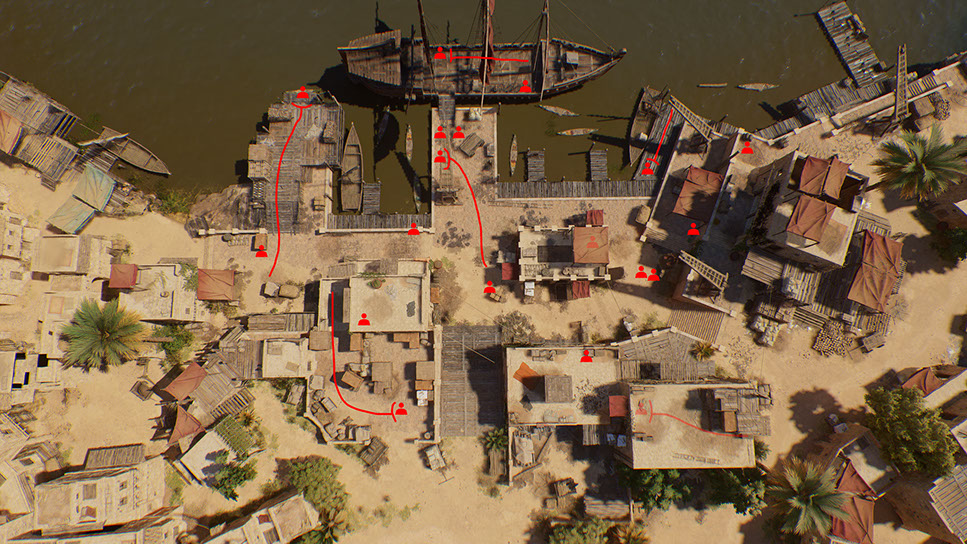

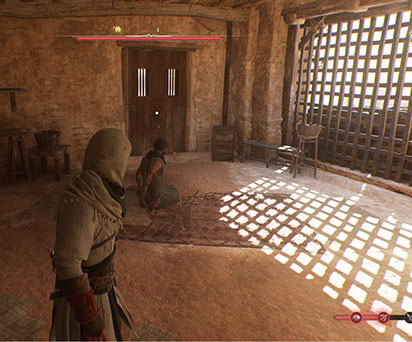
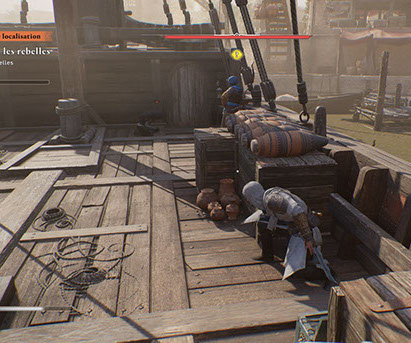
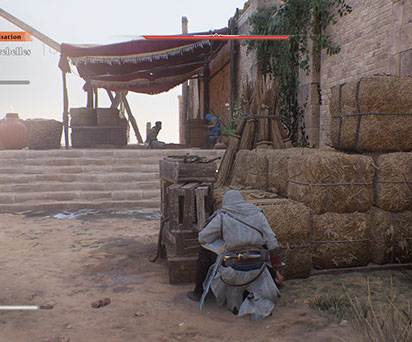
The red arrows represent the main entrances, taking into account the placement of the quest. After players finish talking to Beshi, two main options will be offered to them.


The orange arrows represent secondary entrances that players can take to navigate the level and find the rebels.

The blue icons represent the placement of rebels that players need to liberate. The rebel inside the building requires a key, which is held by the captain.
The red character icons represent enemies from the Turkish army. The red lines indicate the patrol routes of some enemies. They will move from one point to another, creating various challenges and opportunities for players.



The orange icons represent various gameplay elements that can explode, fall onto enemies, or distract them.
- Exploding jars: Kills enemies in a specific range. Can be directly hit by a throwing knife.
- Falling hazards: Kills enemies in proximity. Players need to throw a knife at the pulley at the top to release it.
- Fighting chickens: Will be released from their cages to attack enemies (or players) nearby. Cages can be destroyed with a throwing knife.
- Scaffolding: Used on certain occasions as part of the gameplay elements.
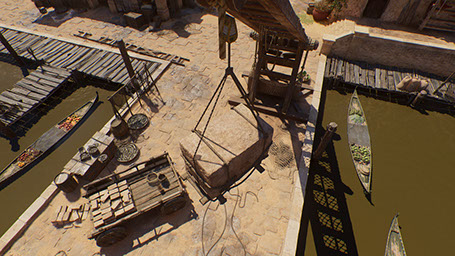
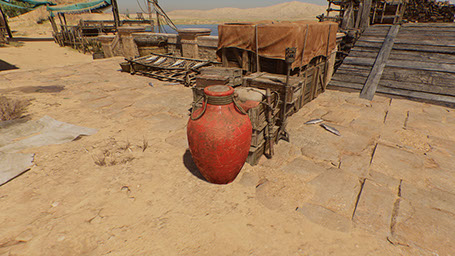

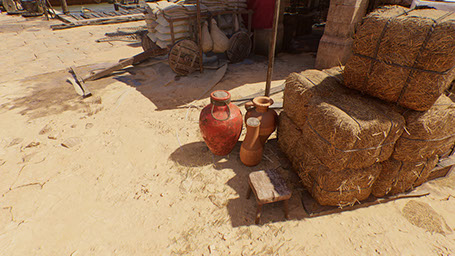
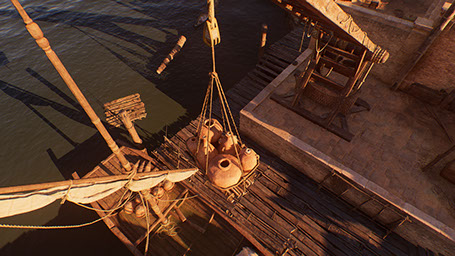
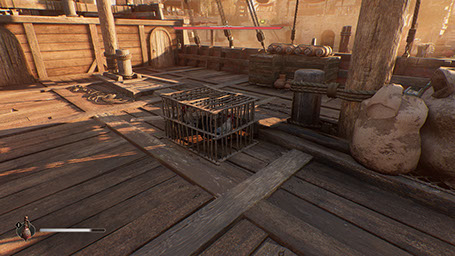
In Upper Harbour, the primary focus was on the trickster playstyle. I had to work with ingredients that enhance this style of play. This location is one of the early game areas designed to allow players to practice and master their first mechanic: throwing knives.
Those ingredients that fit perfectly combine with Trickster playstyle and knifes are the falling hazard and the explosive jars. These two elements were introduced and emphasized. I decided to save the other trickster ingredients for the upcoming trickster locations.
.gif?crc=3879054823)
.gif?crc=56306836)
The level was also designed to align with the quest created by Vincent Kara. We agreed that based on the foundation of the level design and consequently the placement of the rebels, players should follow a loop inside the level. During this loop, navigation is supported by parkour elements, and players are compelled to confront challenges.
One specific challenge is situated in the middle of the harbor: the captain holding the key. Once players have the key and accomplish their objective, they can remain inside the building. This interior is designed as a safe space, providing players with narrative context, ammunition, and rewards.

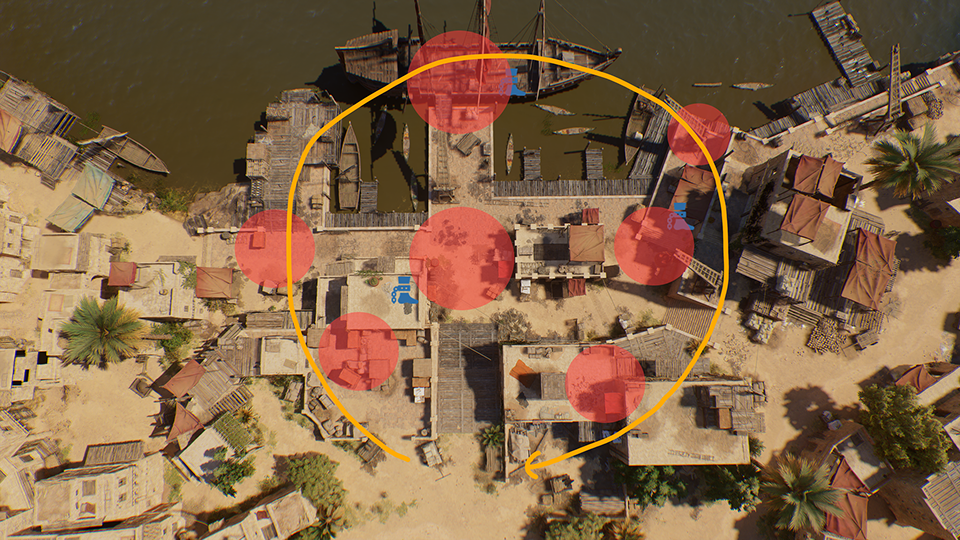
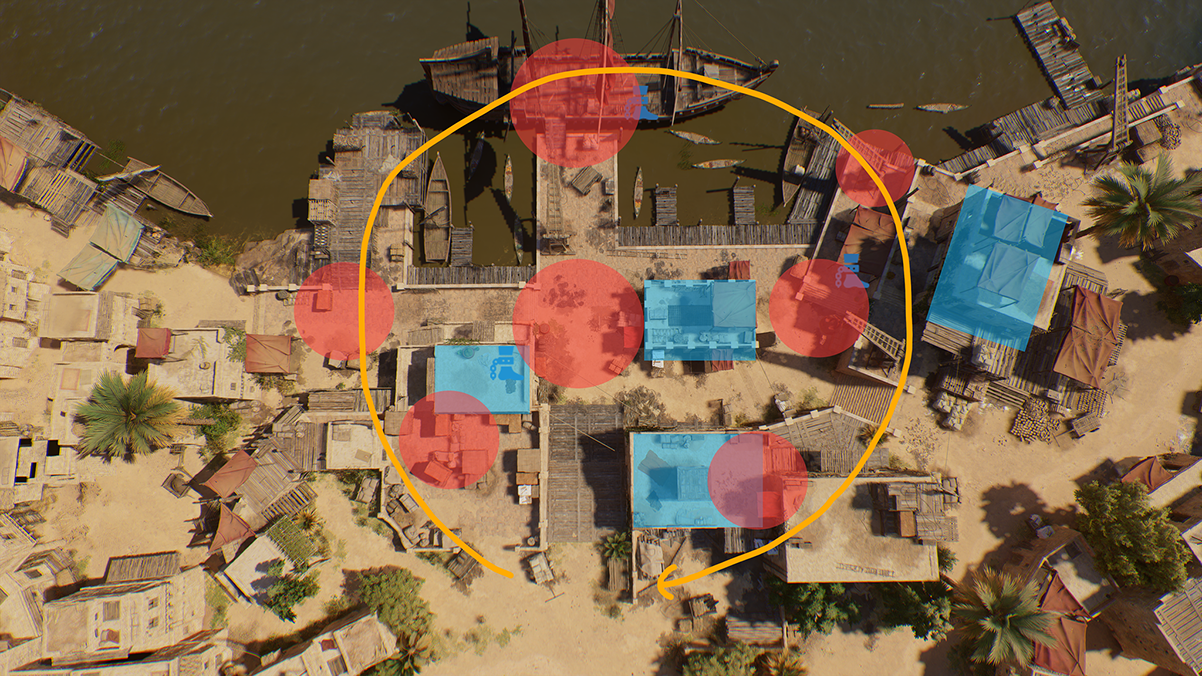
This playstyle requires the player to maintain a certain distance, creating distractions far from their position to take advantage of the situation. It serves as a method to eliminate multiple enemies with a single knife, encouraging players to utilize trickster ingredients strategically. Accordingly, throwing knives are individually placed in specific spots often used as perfect locations for knife throws.
Adhering to these rules, I organized enemies into separate groups or bubbles, ensuring they do not interact with each other. I worked closely with Julie Capitaine who was the Level artist on this location.
The red circles represent enemy bubbles, indicating challenges within the level involving multiple enemies in the same area. If an enemy within a bubble detects the player or if enemies are killed by the player, other enemies in the area should enter investigative or alerted states. This dynamic system intensifies the challenge, forcing players to be strategic in their engagements with enemies within a bubble.

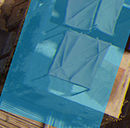
The blue rectangles represent safe zones where players can seek refuge. These areas are devoid of enemies, allowing players to find ammunition, health, and rewards without the threat of hostile encounters.
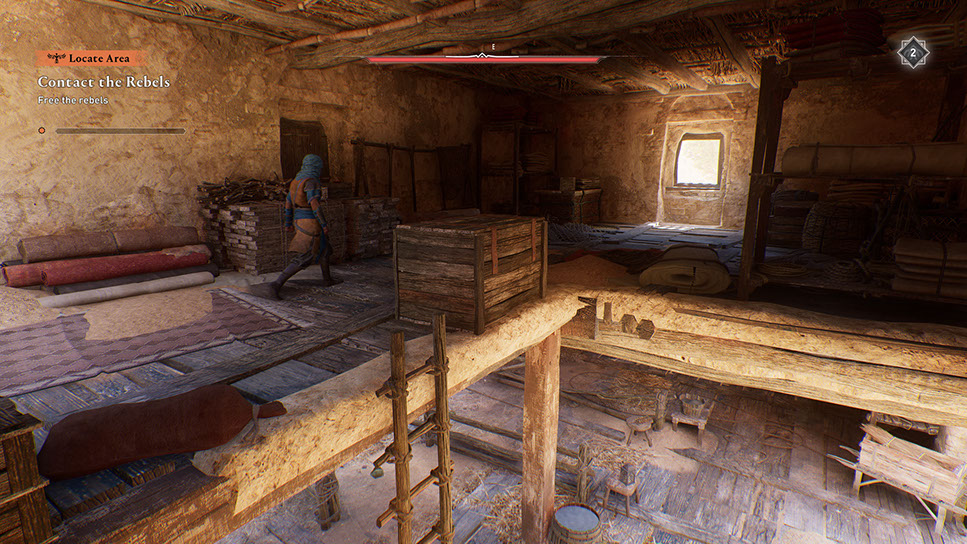
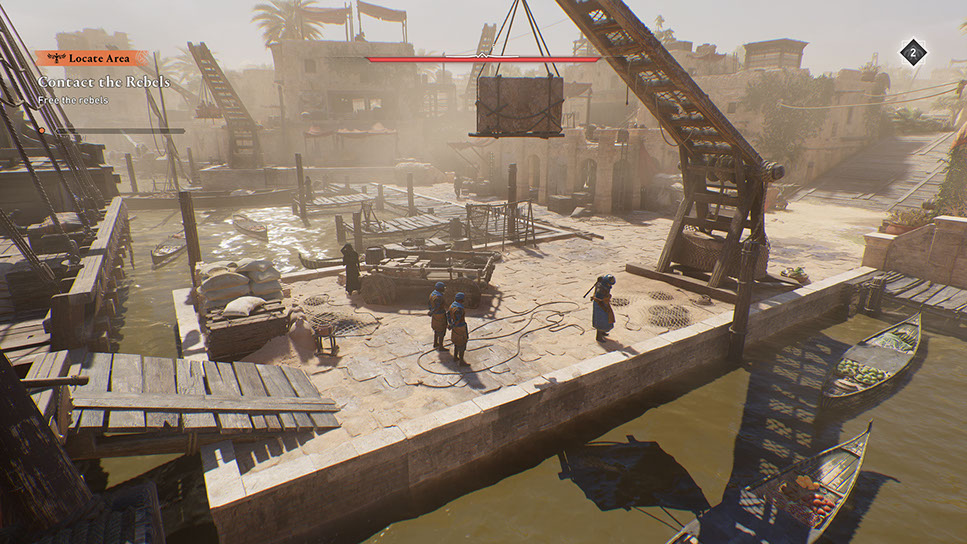
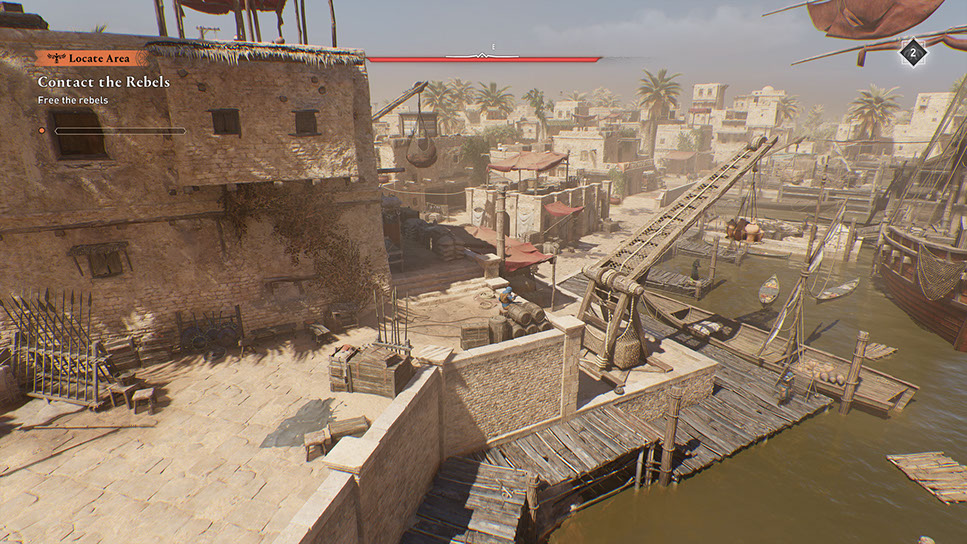
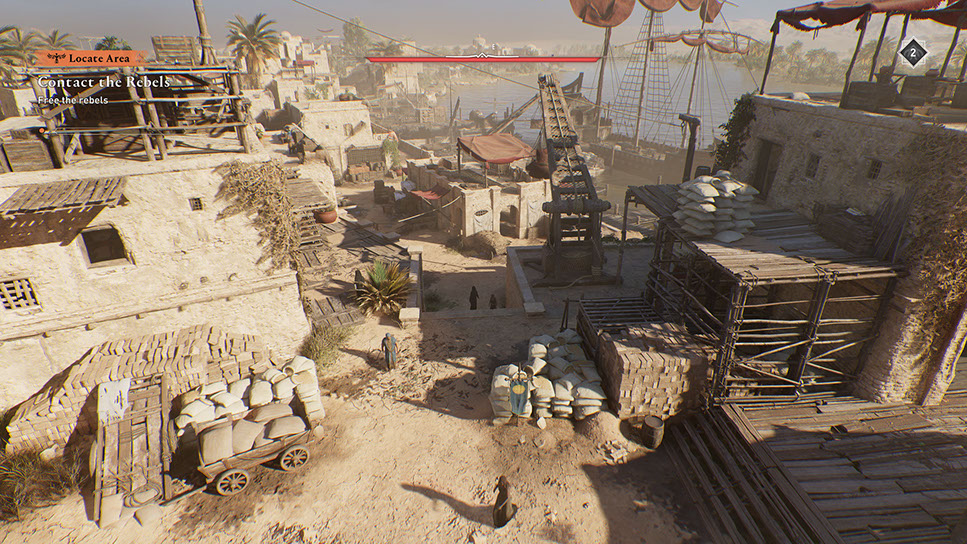
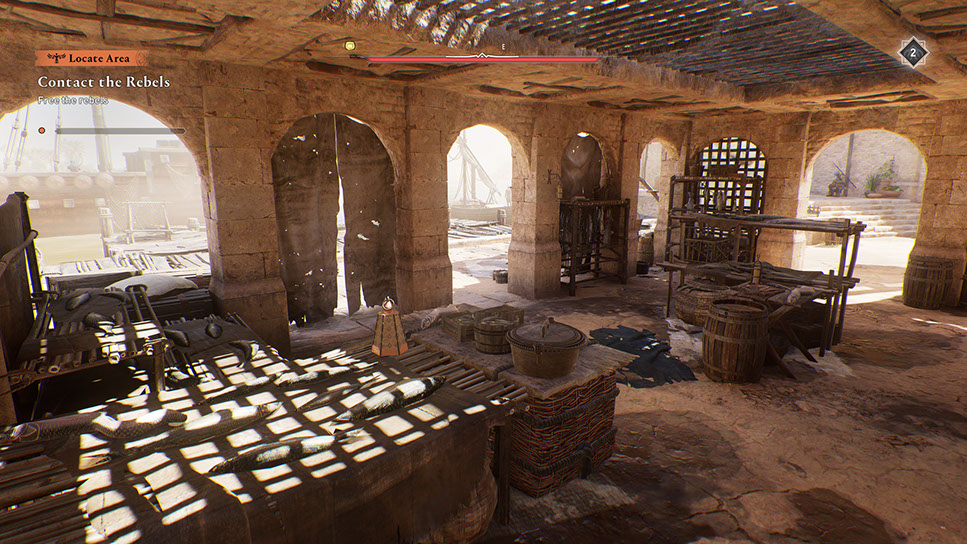
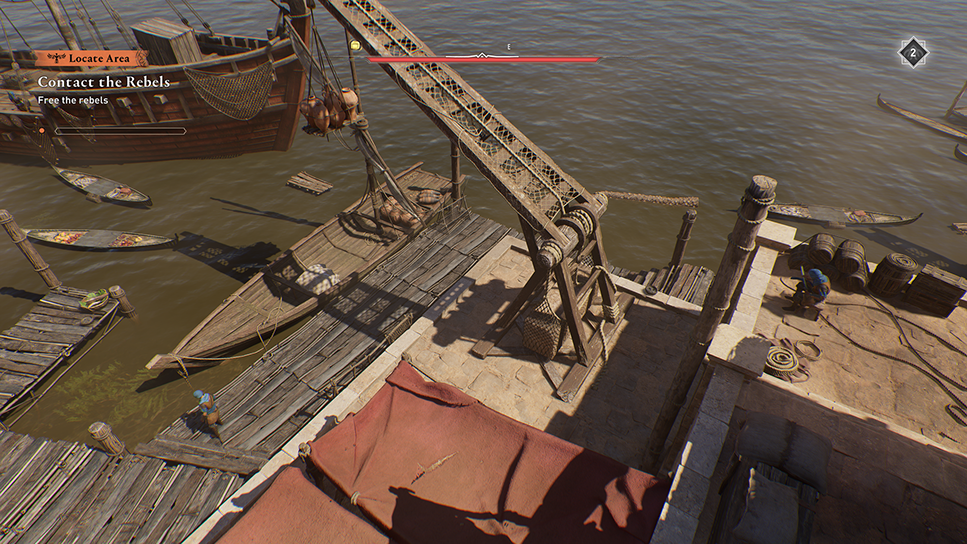
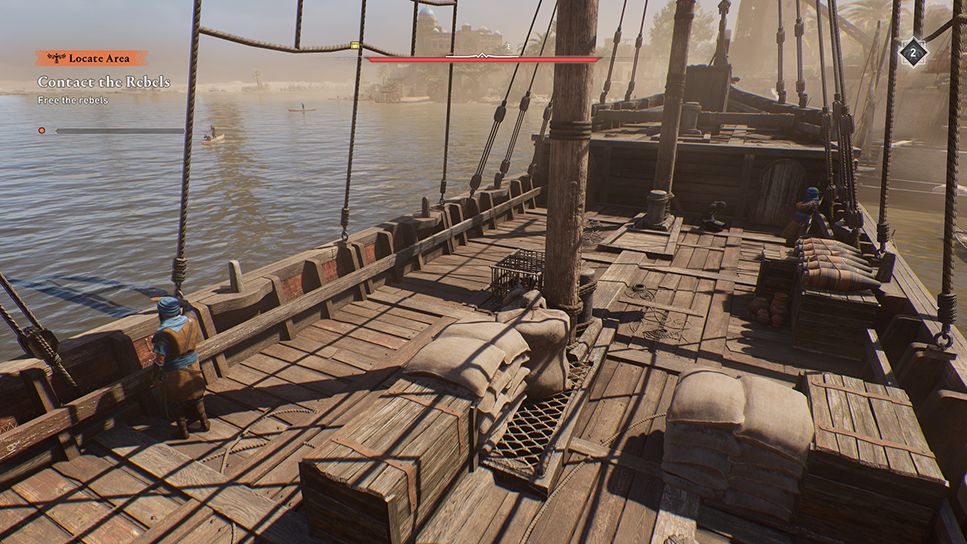


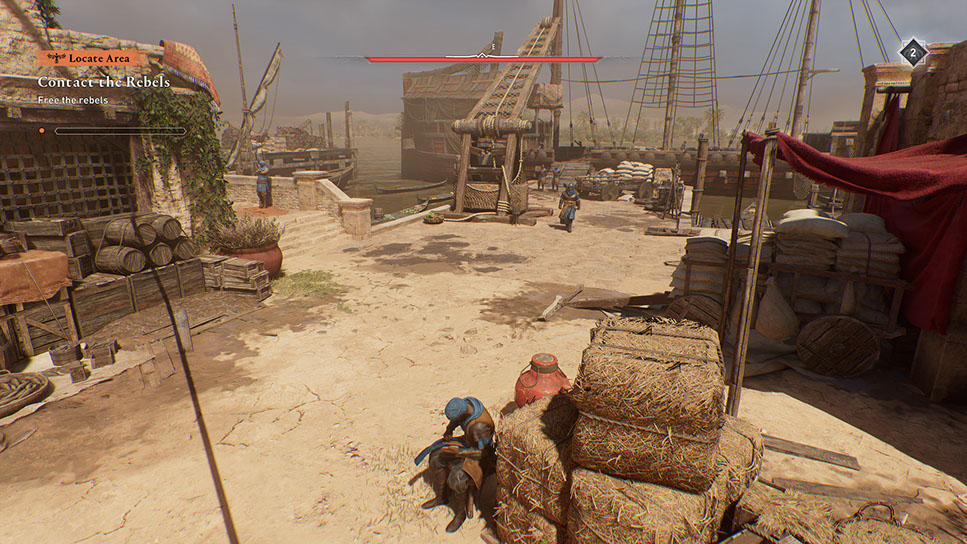
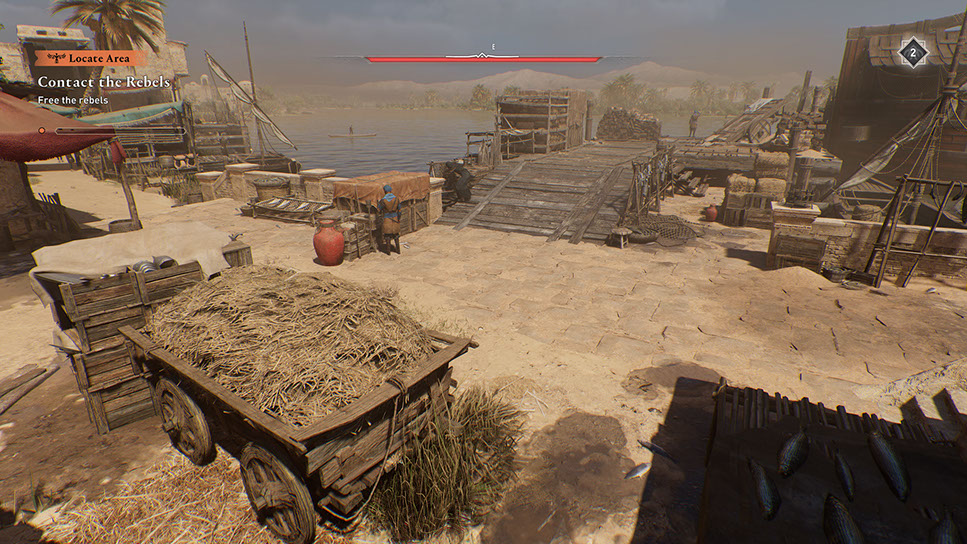
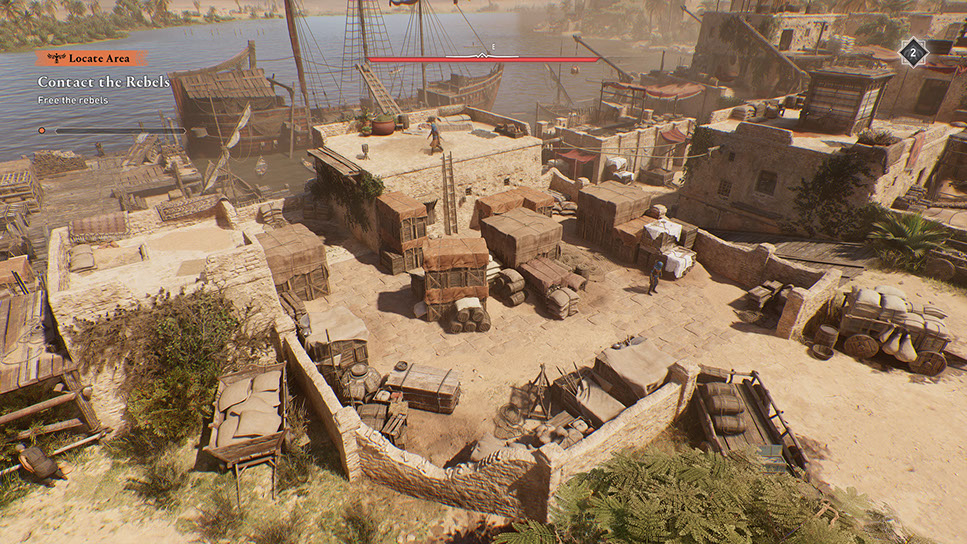
From a technical perspective, I worked with various tools:
- Terraforming: Modifying the terrain and landscape features.
- Ingredient Setup: Configuring interactive elements and gameplay components.
- Location Boundaries: Defining the limits of the area to prevent enemies from venturing into open-world spaces and displaying location-specific information, including the red zone.
- Network for AI: Creating connections and pathways for AI.
- Crowdlife (NPCs and Animals): placing NPCs within the game environment, defining their behaviors, and ensuring they interact with the player and the surroundings in a lifelike manner.
- Patrols Setup: Establishing routes and patterns for enemy patrols.
- Navmesh: Baking navigational meshes to facilitate movement for characters, a crucial aspect also handled for the entire game world.
Districts
I had the opportunity to work on something more macro than just individual locations – the sub-districts. Specifically, I focused on Khuld, Zubaydyah, and some parts of Shari. These areas are all situated in the north of Baghdad within the Harbiyah district.
I had several tasks for the district:
In Khuld, the goal was to create a parkour highway guiding players from point of interest to point of interest, encompassing both main quests and certain world contracts. I had to take over Elie Harb and Diego Amador's work to revise, improve and perfect it.
To design an effective parkour path, we established intuitive rules:
- Continuity: Players should always see the flow of the parkour route.
- Variety: The path needed rhythm and diversity in parkour elements and spaces, including interiors and stairs.
- Turns: Avoid sharp 90-degree turns unless components are specifically designed for them.
- Contrast: Create contrast with the environment to highlight the parkour elements.
- Clarity: Avoid misleading elements; parkour elements should guide, not confuse.
- Visibility: Ensure parkour elements don't hide one another; instead, they should assist the player.
- Metrics: Maintain the right distance between elements according to established metrics.
- Artistic Intent: Balance technical considerations with the artistic vision for a seamless parkour experience.
Another significant task related to the district was managing the crowdlife.
My responsibility was to populate the world with NPCs to make it lively. I worked with a diverse array of NPCs engaged in various activities – working, conversing, entertaining, and more. This task also extended to animals like cats and birds. Placing them following specific guidelines, ensuring logical distinctions in different areas such as rich and poor neighborhoods, lands, riversides, etc. I had to take over Cédric Mevel 's work to revise, improve and perfect it as well.
This process involved continuous collaboration with level artists (Cristel Mrowka and Jordann Jacobe) to maintain a coherent and immersive world. Here are a few examples of the work involved in this task:
In the world, my responsibilities also included tasks like placing archers on rooftops strategically, positioning them close to vanishing spots and parkour highways. Additionally, I arranged low-value containers equidistant from each other, ensuring they were placed in a way that rewarded exploration. These efforts were geared towards enhancing the gameplay experience and encouraging players to explore the environment thoroughly.
- Collaborating with the different core teams from Singapour and Sofia.
- Working on Anvil, Owner of some locations that are part of the main quests.
- Designing these locations, focusing on stealth, parkour and the trickster playstyle.
- Owner of Districts for particular design and technical subjects.
- Setting parkour highways and crowdlife on these districts.
- Collaborating closely with Quest Designers and Level Artists.
- Debugging until Gold.
Work Highlights
Benoît Cassin
©BenoitCassin2023

